Photos: Civil unrest erupted in July 1967 in Detroit
DetroitFreePress-Unknown
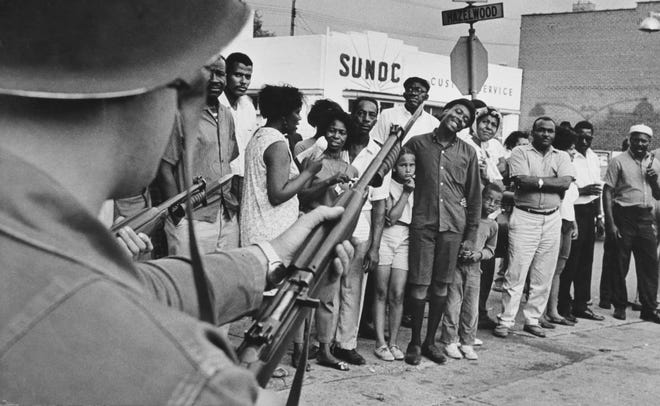
National Guardsmen patrolled Linwood Avenue at Hazelwood on the first day of one of the worst weeks in Detroit's history in July 1967.
Tony Spina, Detroit Free Press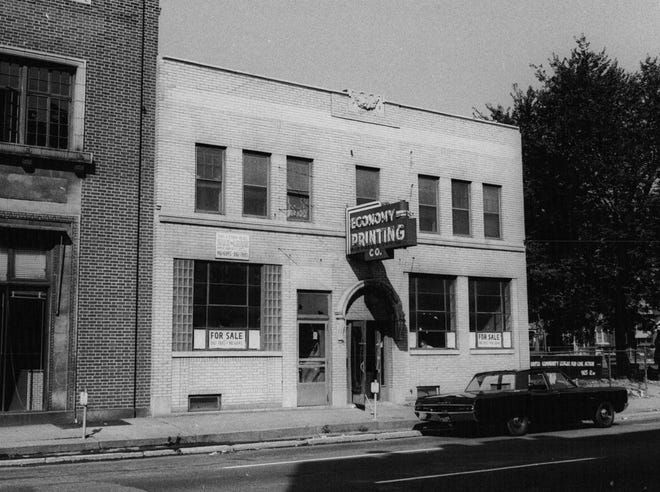
The blind pig, also known as the United Community League for Civic Action, was on the second floor of Economy Printing at 9125 12th Street in Detroit. A police raid on this illegal bar and gambling joint sparked the 1967 Detroit uprisings.
Ira Rosenberg, Detroit Free Press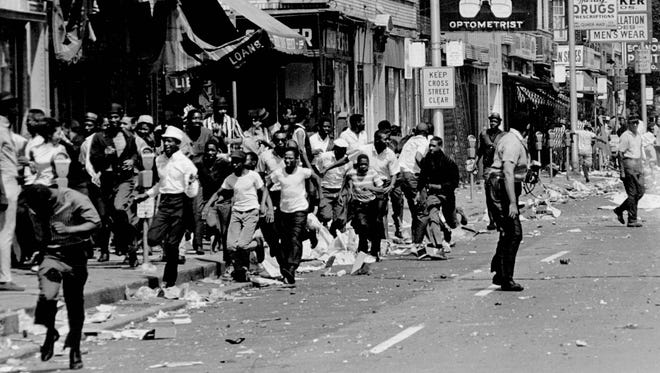
The streets of Detroit during the 1967 riot.
Tony Spina, Detroit Free Press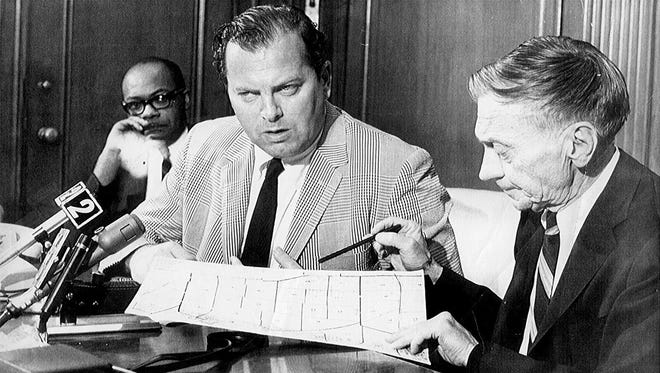
Mayor Jerome Cavanagh, left, and his police commissioner, Ray Girardin, in 1967. Discussing how the riot affected him as mayor, Cavanagh said: "I was sure of myself, got praised, and now I can't guarantee anything."
Detroit Free Press Archives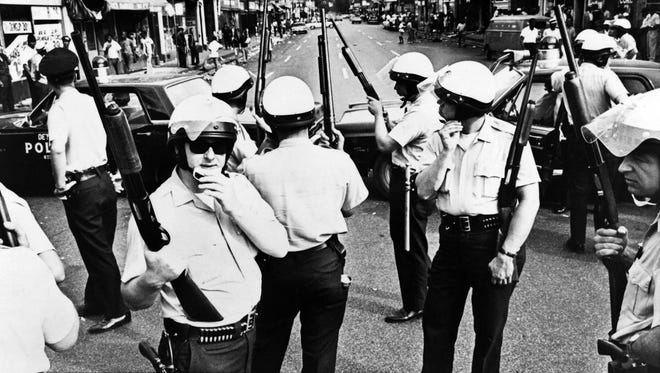
Police blockade a street near the downtown area. Sunday morning when police raided an unlicensed after-hours bar known as a "blind pig".
AFP/Getty Images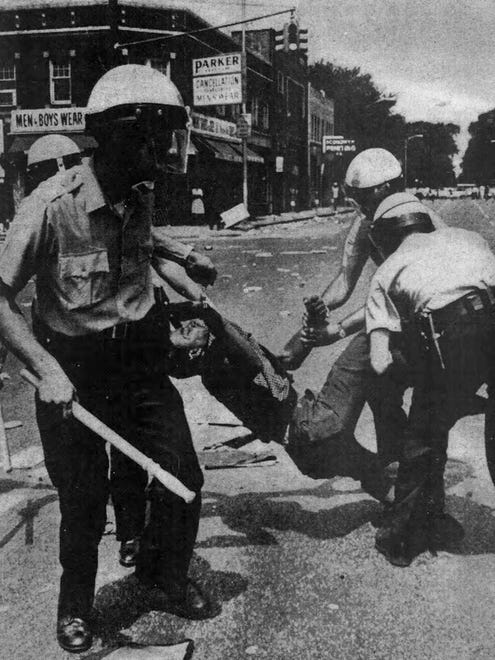
Police carry off a kicking, screaming man that was involved in the disturbance.
Detroit Free Press File Photo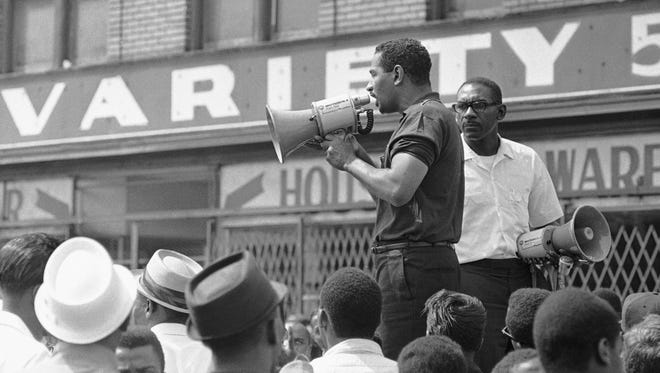
Congressman John Conyers, Detroit Democrat, uses a bullhorn as he tried to encourage African Americans in Detroit's riot area to go home, July 23, 1967. He was met with shouts of "No, no." As Conyers stepped down a rock hit the street a few feet from him.
Associated Press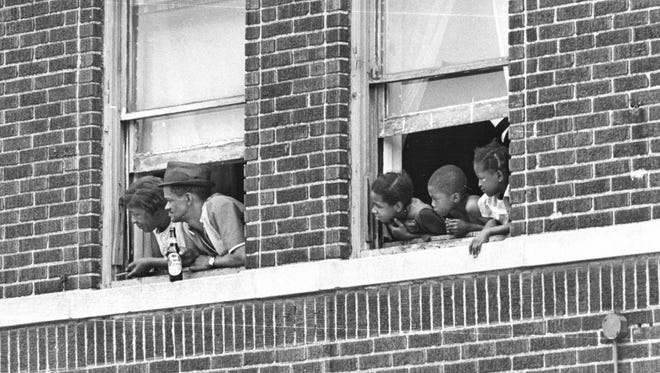
People look out of the window during the Detroit Riots in July 1967.
Ira Rosenberg, Detroit Free Press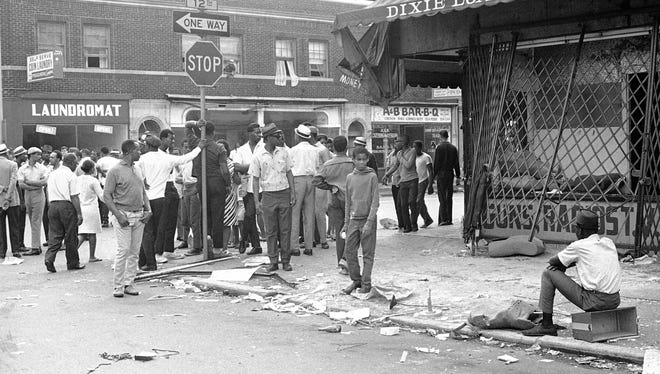
A loan office had been looted at 12th and Taylor in Detroit on July 23, 1967 where racial violence began on Sunday and is continuing with new fires looting and shooting reported.
Associated Press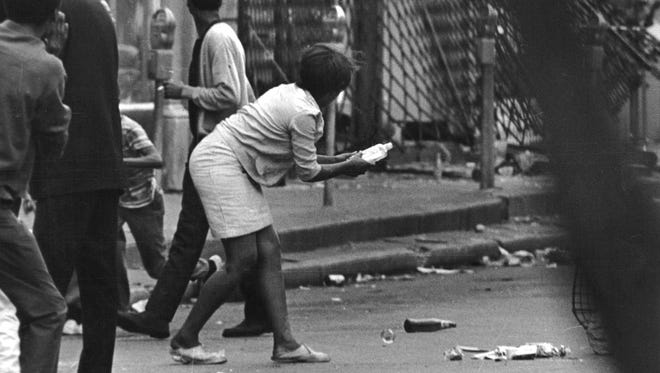
A woman prepares to throw a bottle during the riots in Detroit in1967.
Tony Spina, Detroit Free Press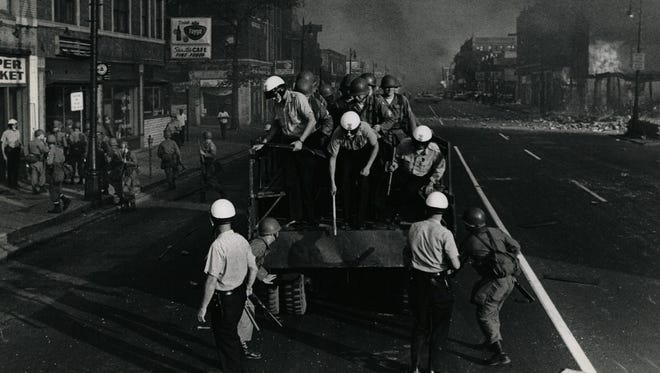
National Guard arriving on Lynwood in Detroit.
Tony Spina/Detroit Free Press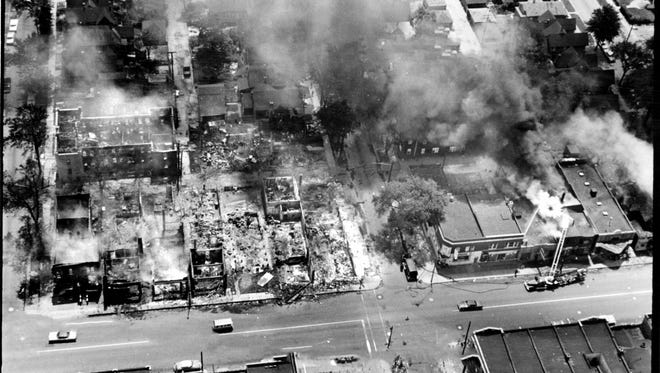
Twelfth Street is pictured under a cloud of smoke during the rioting in 1967.
Tony Spina, Detroit Free Press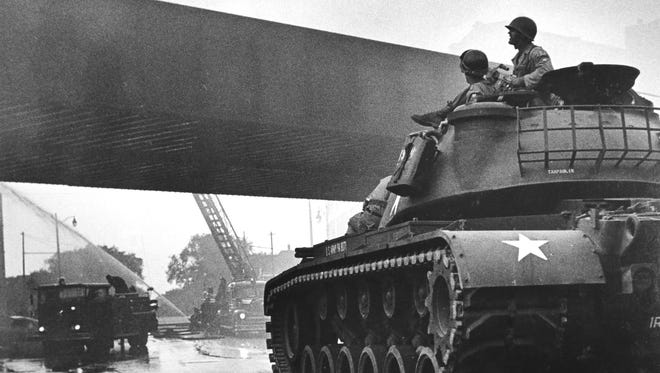
Tanks were used during the riots in Detroit on July 23, 1967.
Tony Spina, Detroit Free Press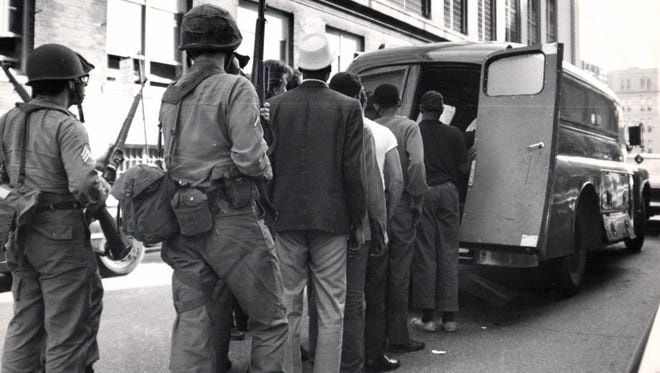
Individuals are lead to the back of a patty wagon.
Tom Venaleck, Detroit Free Press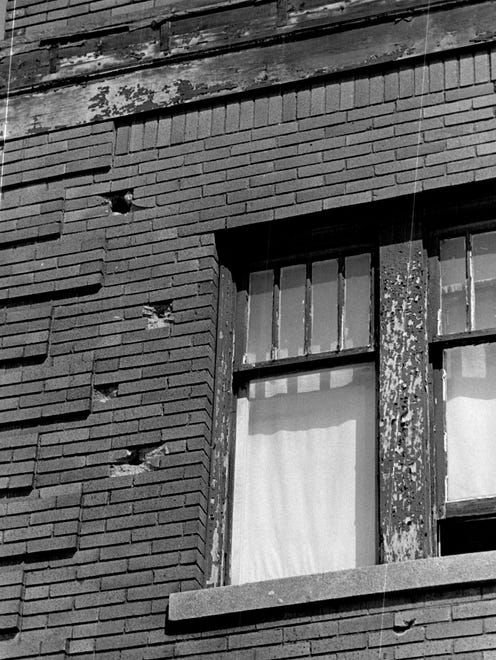
Bullet holes in a building on 12th street during the 1967 Detroit riot.
Ira Rosenberg, Detroit Free Press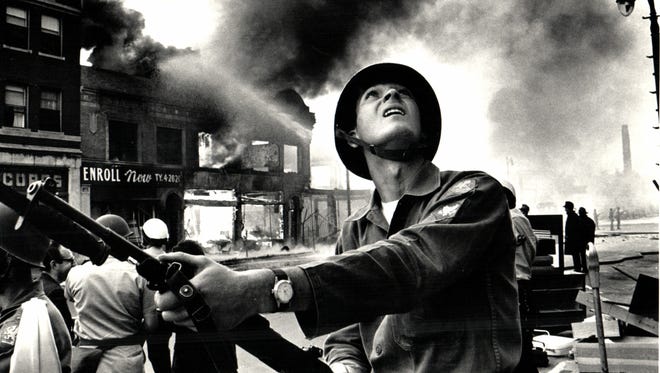
National Guardsman Gary Ciko checks on buildings for snipers on the first day of the 1967 riot in Detroit, Michigan.
Tony Spina, Free Press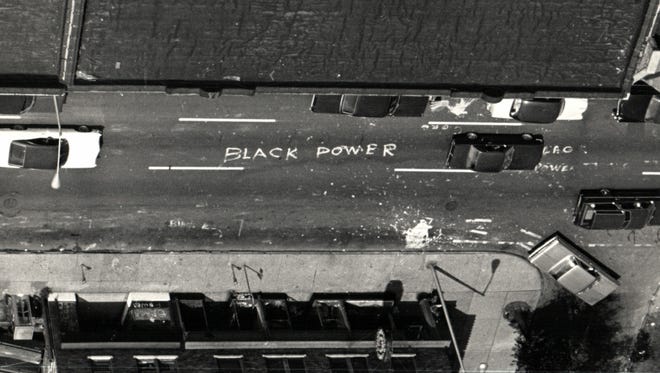
Lynwood street during the 1967 riot.
Detroit Free Press File Photo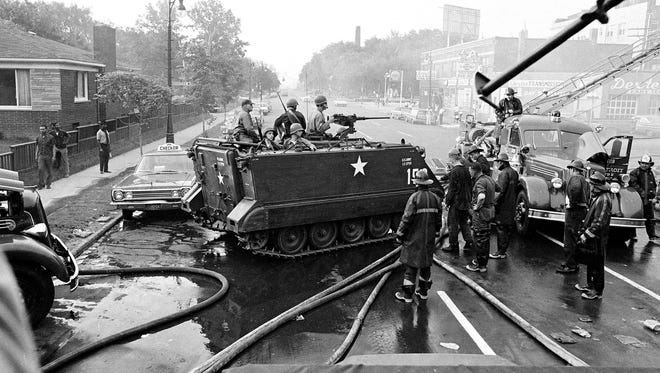
National Guardsmen, were called in to restore order by Michigan Gov. George Romney, stop their vehicle near a Detroit fire truck July 24, 1967, in the neighborhood that was ravaged by rioting the previous day. At least three people were killed.
Associated Press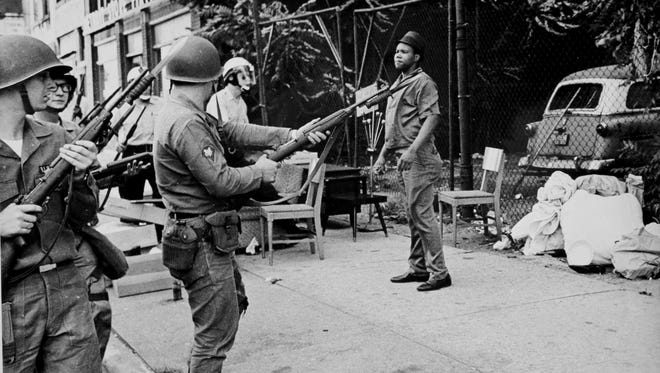
An African American man being confronted and frisked by police in Detroit during the riots in 1967.
Tony Spina, Detroit Free Press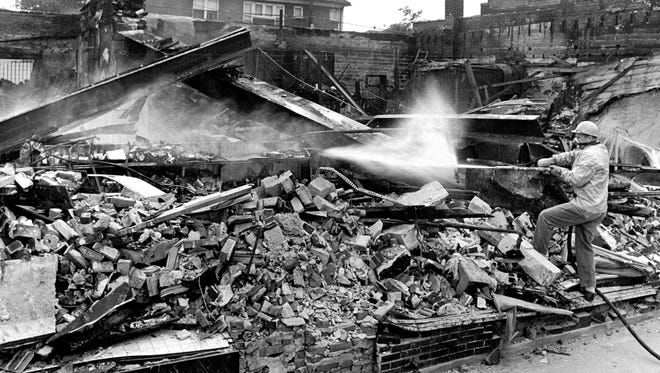
A firefighter works to put out a building fire, started by the rioters in 1967 in Detroit, Michigan.
Dick Tripp, Detroit Free Press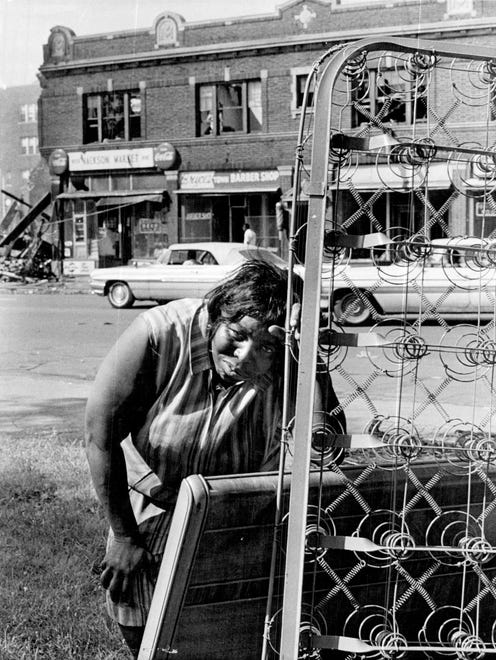
The flames of riot leave so little for their victims. For Emma Jean Woolford it was only bedsprings and a headboard dragged desperately from her blazing home to safety at Boston Blvd snd Linwood in Detroit on Sunday, July 23, 1967.
Bert Emanuele, Detroit Free Press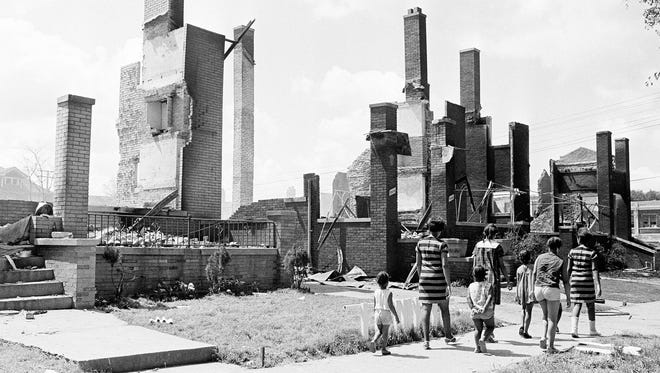
A woman and children stroll past the remains of once substantial homes which were caught up in the path of the rioters in Detroit, July 25, 1967. The houses are a short distance from 12th Street, center of the riot area.
Associated Press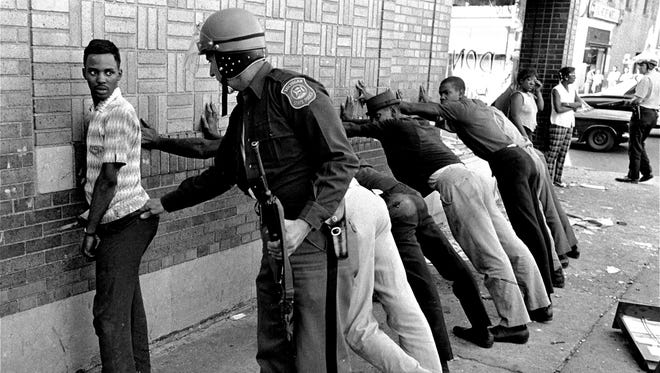
In this July 24, 1967 file photo, a Michigan State police officer searches a youth on Detroit's 12th Street where looting was still in progress after the previous day's rioting.
AP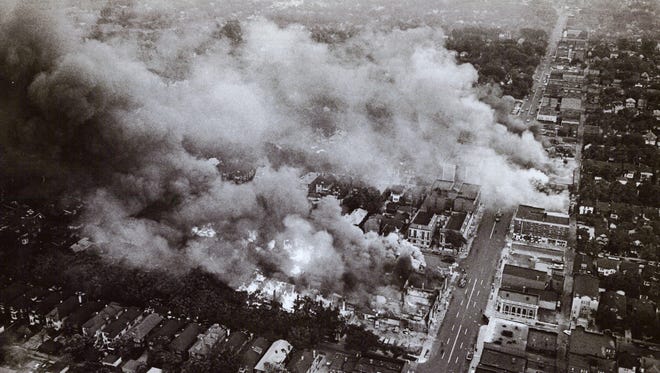
Pingree Street in Detroit burns during rioting in 1967.
Tony Spina/Detroit Free Press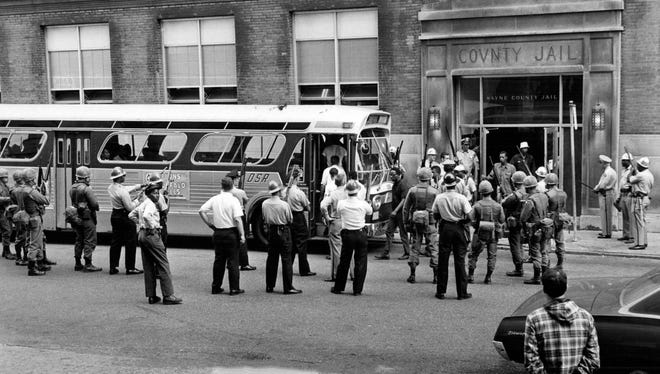
People leave the Wayne County jail in downtown Detroit board a bus during the riots in Detroit in1967.
Jerry Heiman, Detroit Free Press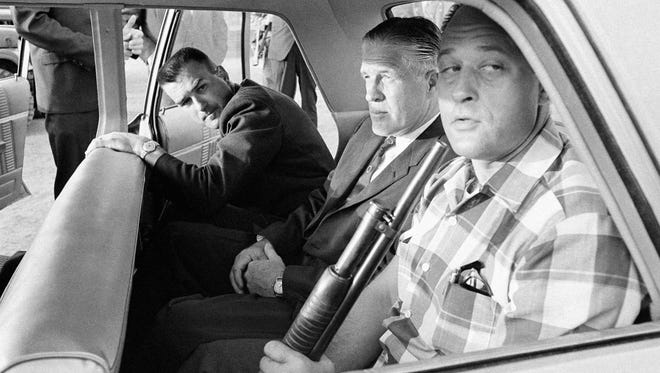
Gov. George Romney, center, is guarded by an unidentified policeman holding a shotgun as he toured the scene of Detroit riot, July 24, 1967. Rampaging blacks bombed, pillaged and burned their way through a wide area of the city. (AP Photo)
AP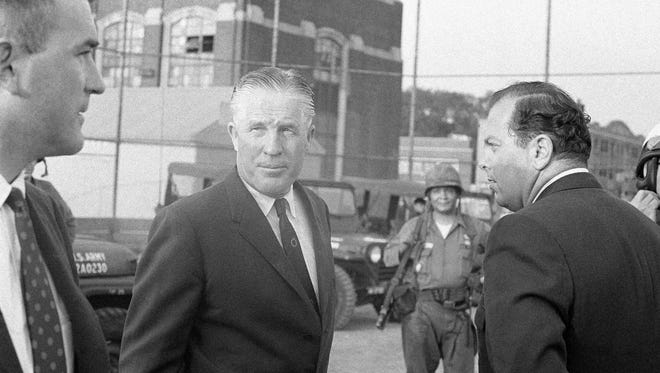
Gov. George Romney, center, confers with Mayor Jerome Cavanagh, right, of Detroit as National Guardsmen standby in a part of Detroit that was ravaged by rioters, July 24, 1967. Romney called in the guardsmen as rioters firebombed and pillaged a wide area of the city.
Associated Press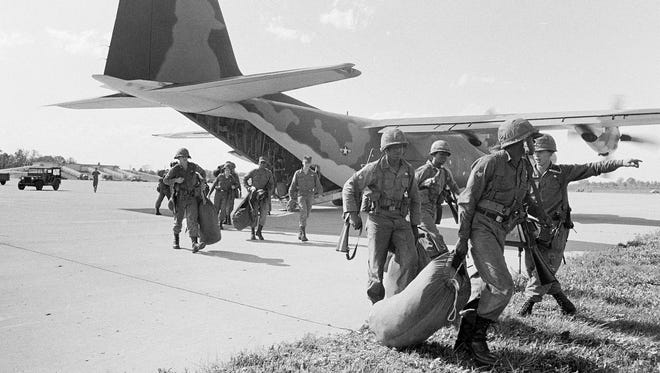
Federal troops land in Selfridge Field, Michigan after President Johnson ordered them to help quell race riots in Detroit, July 24, 1967. About 5,000 troops were called in.
AP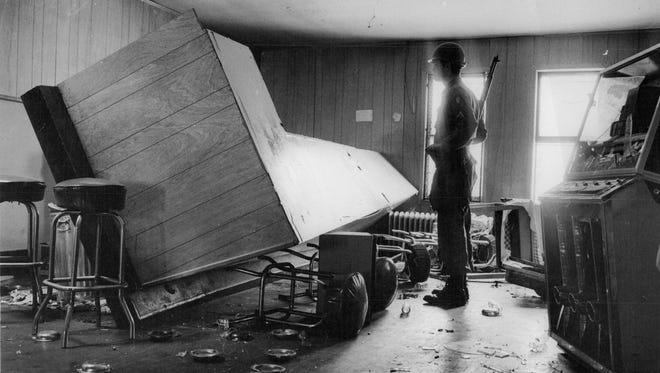
The only thing left in the The Blind Pig was a turned over bar during the riots of 1967 in Detroit.
Ira Rosenberg, Detroit Free Press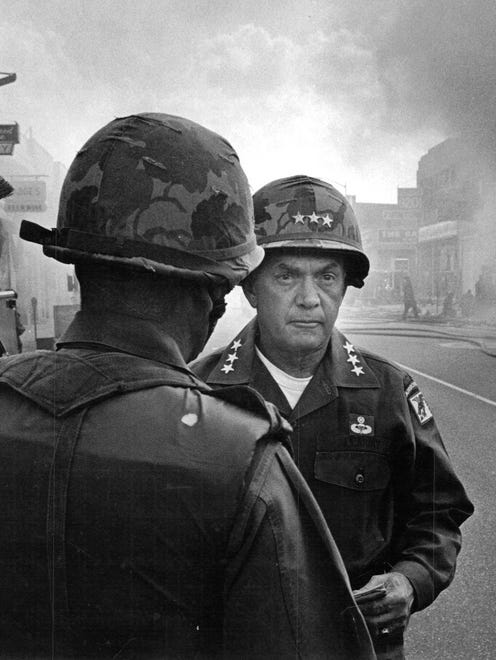
Lt. General John Throckmorton takes to the field with his paratroopers in riot-torn Detroit on July 25, 1967. Throckmorton is commander of the 4,700 troops sent to Detroit by President Johnson to quell the outbreak.
Fred Plofchan, Detroit Free Press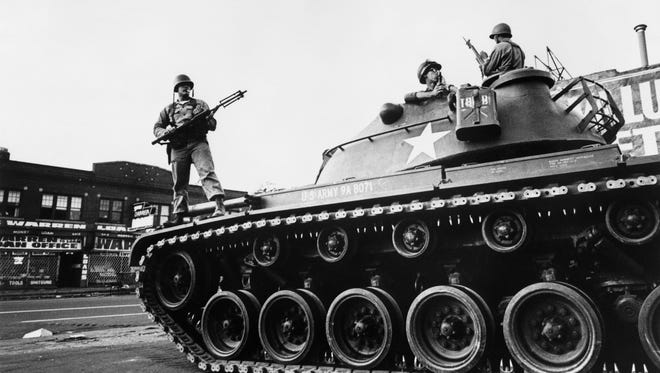
Federal soldiers stand guard on a tank in a Detroit street on July 25, 1967 during riots that erupted in Detroit.
AFP/Getty Images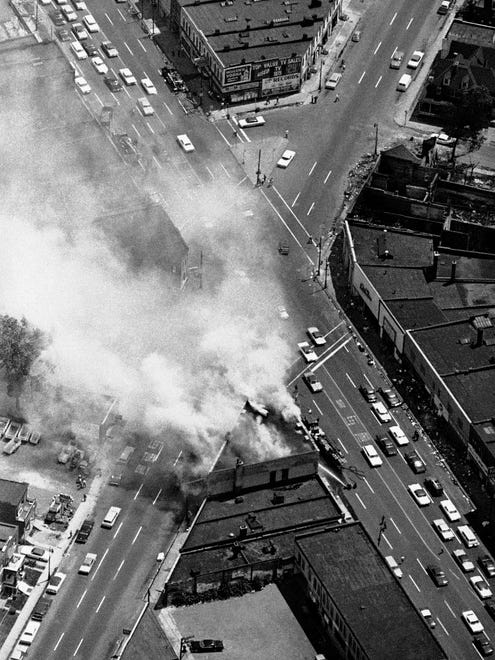
In this July 25, 1967 photo, smoke rises from a fire set at the busy intersection of Grand River and 14 Street in Detroit, near another burned out building. The fire was set despite patrols by the National Guard, police and Army troops.
AP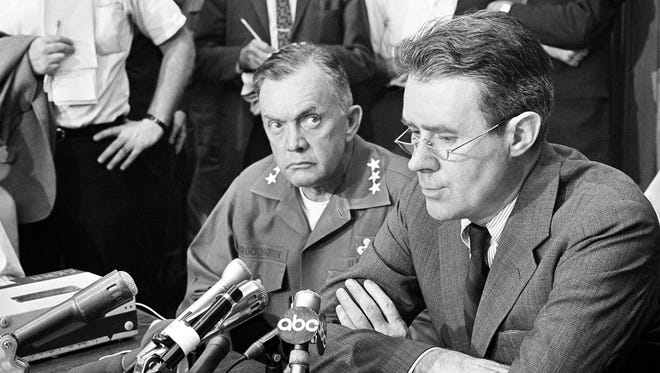
Lt. Gen. John J. Throckmorton, left, commanding general of U.S. Army troops in Detroit, and Cyrus Vance, special assistant to Defense Secretary Robert McNamara, appear at a press conference in Detroit, July 25, 1967. Vance said the situation in the city appeared less tense than the previous night. Gen. Throckmorton said his troops had been ordered to use minimum force to keep order in the riot areas.
Associated Press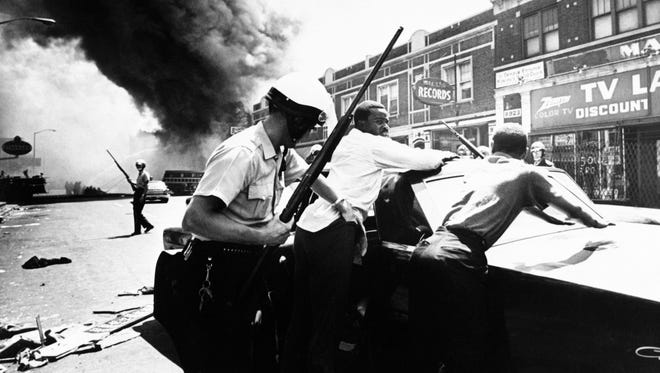
A policeman searches black suspects in a Detroit street on July 25, 1967 as buildings are burning during riots that erupted.
AFP/Getty Images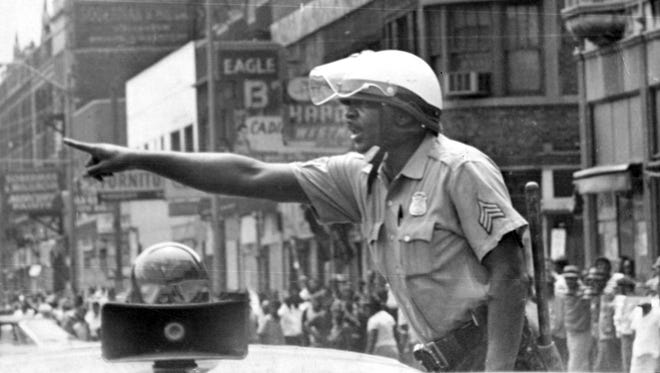
A police officer gives instructions during the riots in1967 in Detroit.
Jerry Heiman, Detroit Free Press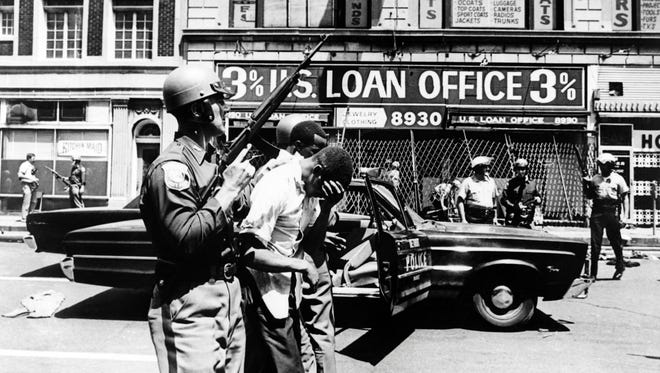
Policemen arrest black suspects on a Detroit street on July 25, 1967 during riots that erupted in Detroit following a police operation.
AFP/Getty Images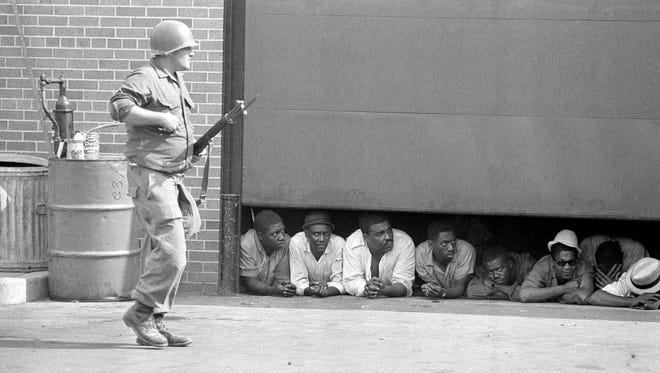
Men captured in the vicinity of the 10th Police Precinct in Detroit, July 26, 1967, peer from under a garage door awaiting removal and guarded by an Army trooper. The precinct building came under fire in daylight hours.
Associated Press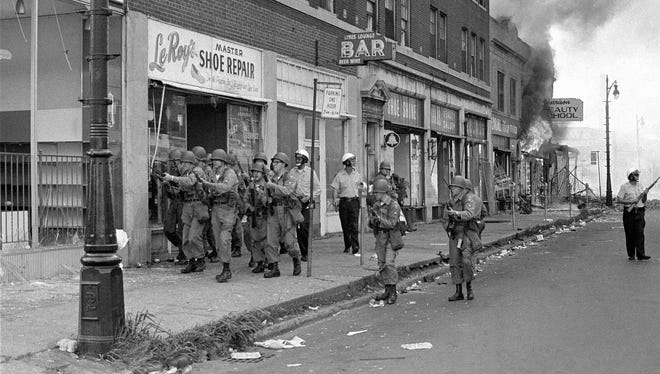
National Guardsmen with machine guns and rifles block off 12th Street on Detroit's West Side, July 26, 1967, to give firemen a chance to fight a small fire. Snipers have taken a heavy toll among firemen as they fought hundreds of fires set by rioters.
Associated Press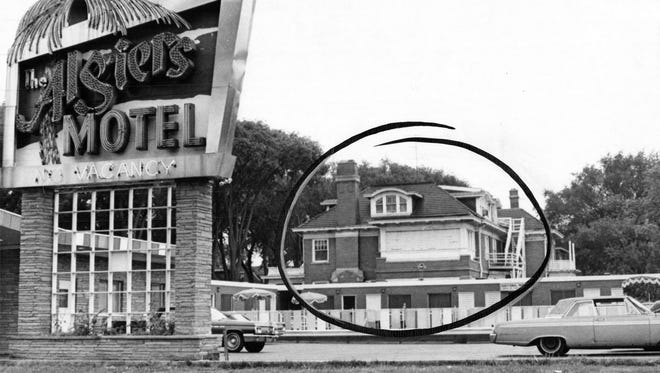
The Manor House, circled, is where three young black men were found slain in late July 1967. It is a three story home turned into an annex for the Algiers Motel, 8301 Woodward Avenue in Detroit.
Ed Haun, Detroit Free Press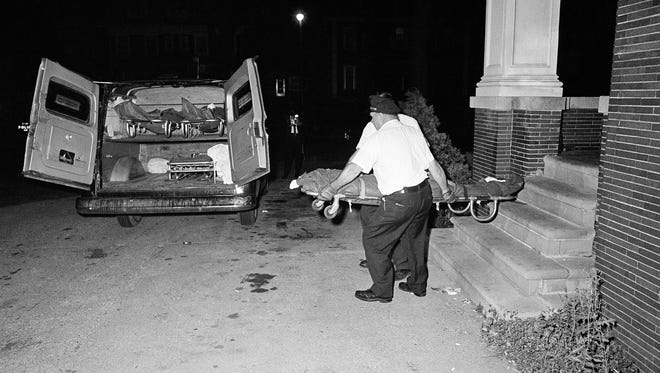
The bodies of three shooting victims are removed from the Algiers Motel in midtown Detroit, July 26, 1967. The three black men were found shot to death in a room of the motel.
Associated Press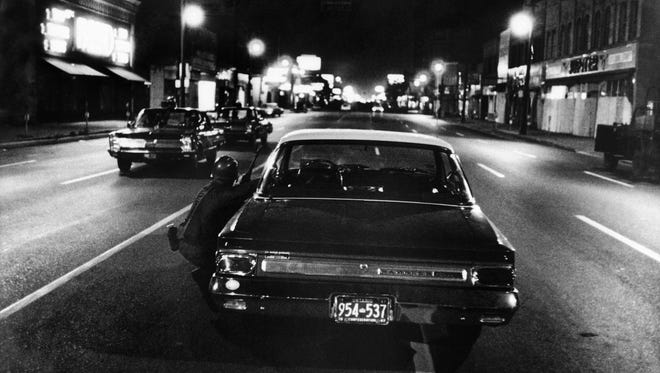
Policemen stand guard in a Detroit street on July 27, 1967.
AFP/Getty Images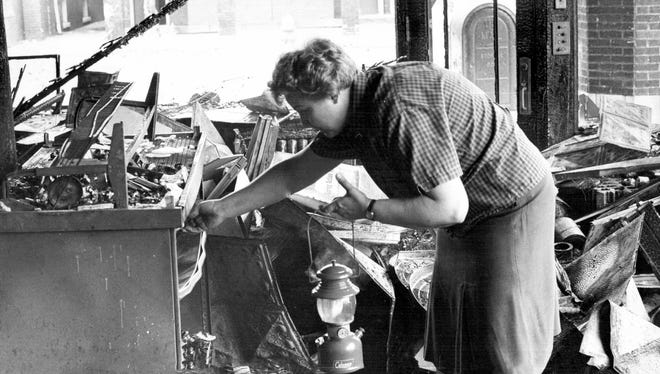
A woman digs through rubble after the 1967 Detroit riots.
Walter Steiger, Detroit Free Press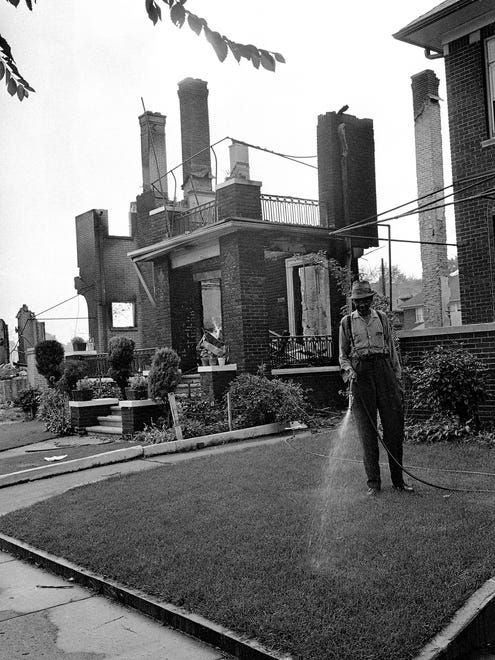
Walter Evans, who lives on Pingree St. on Detroit’s West Side, patiently waters his lawn, July 27, 1967 to keep it green in front of his home which was spared from fires set by rioters. Next door are the stark ruins of his neighbor’s home burned by a fire that swept almost the whole residential block.
Associated Press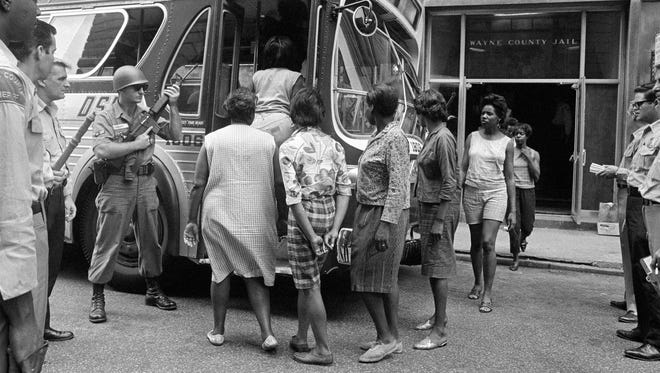
Women prisoners arrested for various offenses during the rioting in Detroit, July 28, 1967, board a bus at Wayne County Jail under the eyes of National Guardsmen.
Associated Press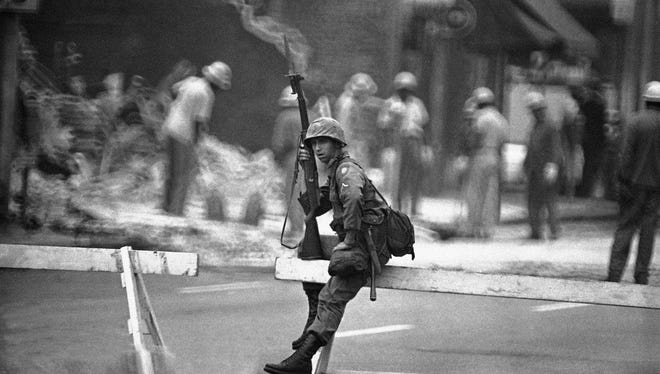
A weary Michigan National guardsman rests on a barricade on Detroit's west wide, July 28, 1967 guarding cleanup crew removing rubble from the nation's worst riot.
Associated Press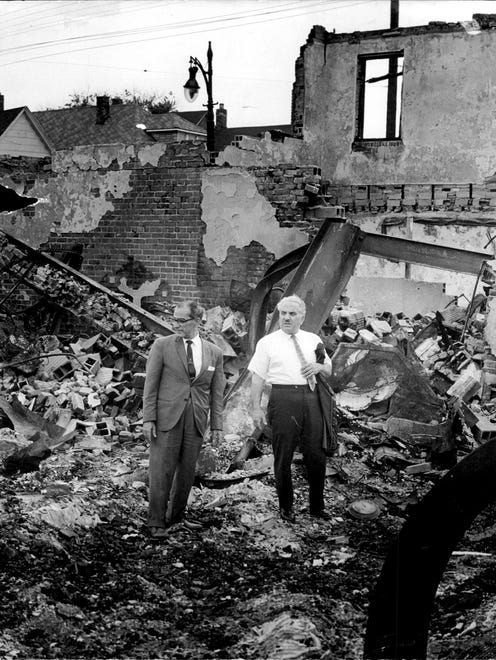
The damages being surveyed after the riots in 1967 in Detroit.
Les Poosch, Detroit Free Press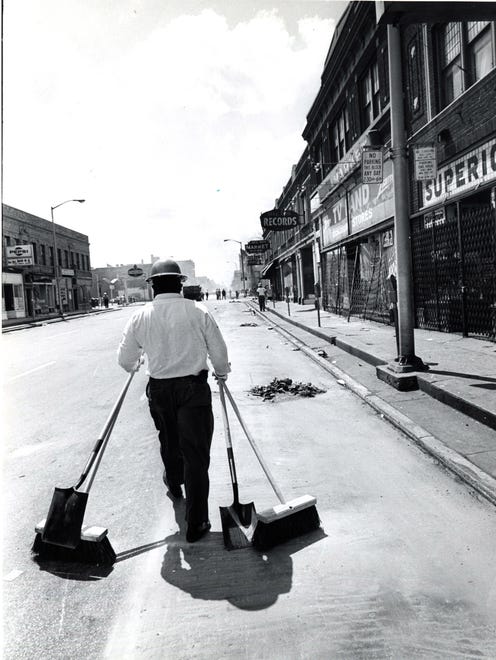
A man is seen cleaning up debris after the1967 Riots.
Ira Rosenberg/Detroit Free Pres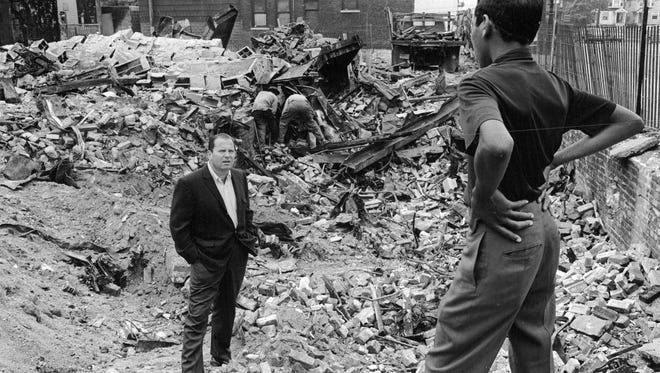
Detroit Mayor Jerome Cavanagh speaks to a young man on Detroit 's east side in September 1967 after the Detroit riots in July of 1967. The young man tells the mayor the rubble had been a five and ten cent store.
Ira Rosenberg, Detroit Free Press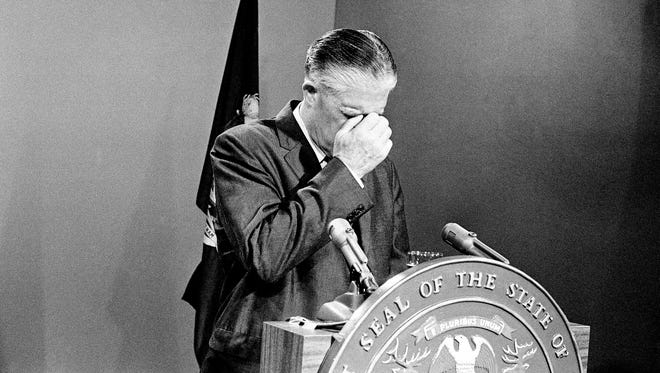
Michigan Governor George Romney bows head with hand to forehead in a moment of meditation before making a live television appearance to speak on Detroit's rioting of past week, July 30, 1967. Romney said, "Both white and Negro extremist organizations are preaching hate and arming."
Alvan Quinn, Associated Press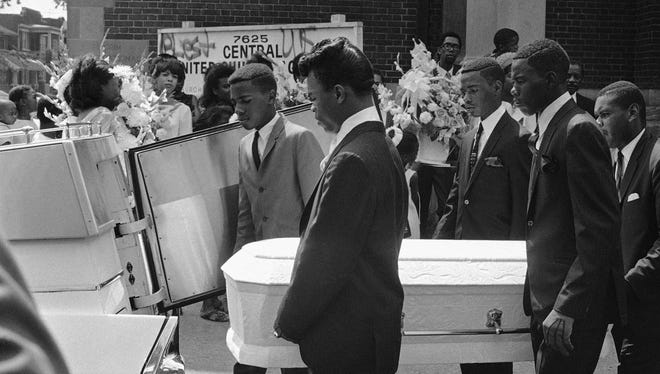
Pallbearers carry the tiny casket of Tanya Blanding, 4, a victim of riots in Detroit, Tuesday, August 1, 1967. The girl was killed as a hail of police and National Guard bullets swept an apartment building where she huddled on the floor. Officials said the flare of a match used to light a cigarette was mistaken for the flash of a sniper's gun.
Associated Press